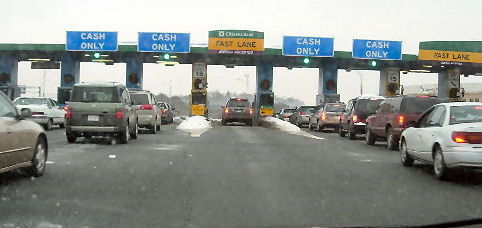Get to know your local LIBRARY!
- on 01.07.11
- Boston, Budgets, Saving $$, Twenty-Somethings
- 3 Comments
- Digg
- Del.icio.us
Can you remember when you were a child and you got your first library card? It was the key to a world of imagination where you could learn about anything you wanted! You could go to the library and spend hours looking through pictures in books and reading about new, exciting topics; gaining knowledge on anything you wanted to. As we have grown up we use the computer and internet to find answers to things that we would like to know. Does that mean that the library is lost in the technical shuffle? Not at all, but most people do not realize that their local libraries are up-to-date with the latest technology and provide much more than just books for their patrons! Best of all, it’s FREE – unless you forget to return something and you are charged interest on it…
I’m not convinced that computers and the internet will ever replace the need for a library completely, but I do feel as if both have enhanced a library’s functionality. In my own library, which is actually a network of libraries in the Boston area called the Minuteman Library Network, you can use the internet to access the Minuteman Network and search everything that is available in the network’s database – all 6.6 million items in the Minuteman Library Network. You can do searches to find the book, periodical, audiovisual material or whatever else that you are looking for. If your main library does not have the item that you are looking for available you can request that it be sent from another library in the network and they will email you when it is ready to be picked up. How convenient is that? Time is money in 2011!
So what does the library provide for services that you might not have thought about before? You can borrow newly released books, DVDS, video games, CDs, and audio books. Paying the price to purchase a desired item would be silly when you know you are only going to read the book once, watch the DVD one time or put the game on the shelf once you have beaten it. Borrowing it from your local library can save you lots of money in the long run! Especially if you have children – we all understand that children like to have new things every week and it is great to be able to keep them preoccupied while learning new things! Besides, you can make an adventure out of a few hours at the library and you still do not have to spend a dime for it!
Here are some suggestions to inspire you to go and check out your local library:
- Many people are using their ipods or other electronic devices to listen to music, watch videos or read books. Did you know that the library has tons of CDs and books on tape? I personally do not need to spend the extra money downloading songs from itunes when I can get the entire album of my favorite artist from the library and upload it to my ipod. I also listen to music at my desk at work all day long, so when it comes time for my commute – I like a little break! I enjoy being able to listen to an audio book to pass the commute through the streets of Boston.
- Another popular trend in today’s society is e-readers – the Kindles, Nooks, iPads, etc. and my library’s network has a Digital Media Catalog service where you can download books for free to your e-reader. Again, for FREE!
- What about museum passes? Yes! My library’s network has free and/or discounted rates to local museums in the Boston area. For instance, if you go to a specific library site like Watertown Library’s you can use your card to log in and see what museums that the library has passes to and what days that they are available. For example, they have passes to the New England Aquarium that admits 4 people at $8/person or the Museum of Science in Boston that admits 4 people at $5/person. That’s a great discount!
In an age when everyone is trying to cut back on their spending why not take advantage of some of the free/discounted services that are available to you locally where you live? Do you own a library card? If not, what is stopping you from getting one now?
Please share your thoughts with me in the comment section below.





